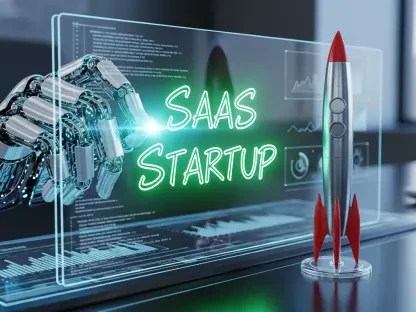Early-stage consumer SaaS (Software as a Service) companies are revolutionizing the way individuals interact with technology by delivering cloud-based applications directly to consumers. These applications aim to enhance daily routines, convenience, and personal productivity. Unlike enterprise SaaS, which caters to businesses, consumer SaaS addresses specific pain points in consumer behavior through digital solutions. The primary revenue model for these companies is subscription-based, allowing users to access services without the need for local installation or maintenance.
Launching with a Minimum Viable Product (MVP)
The Role of MVP in Market Validation
Early-stage consumer SaaS companies often begin their journey by launching a minimum viable product (MVP). This strategy allows them to gauge market interest and gather valuable user feedback. By starting with an MVP, companies can refine their offerings based on real-world usage and preferences, ensuring that the final product meets consumer needs effectively. The MVP approach provides a way to test assumptions about the market and user behavior without committing extensive resources upfront.
This method of launching an MVP is particularly advantageous because it enables rapid iteration. Feedback collected from early users helps in pinpointing pain points and areas that require improvement. As SaaS companies continue to develop their product, they can implement changes that directly reflect user desires and requirements, leading to a more polished and customer-focused solution as the product evolves. This iterative approach not only enhances the product’s quality but also increases the likelihood of achieving product-market fit.
Freemium Model for Rapid User Acquisition
The freemium model is a popular approach during the MVP phase, offering basic services for free while charging for advanced features or an ad-free experience. This model helps attract a broad user base quickly, with the goal of converting a portion of these free users into paying subscribers over time. The freemium model lowers the barrier to entry, making it easier for users to try the product without a commitment, thereby driving initial user acquisition and engagement.
The success of the freemium model hinges on providing enough value in the free tier to entice users while also offering compelling paid features. By offering incremental value through premium options, companies can encourage users to upgrade their subscription plans as their needs grow or their satisfaction with the product increases. This strategy not only drives revenue but also fosters a sense of loyalty and satisfaction among the users, as it allows them to experience and benefit from the service before making a financial commitment.
Revenue Models and Acquisition Strategies
Diverse Revenue Streams
Revenue models for early-stage consumer SaaS startups are diverse, including tiered subscriptions, in-app purchases, and bundling services with complementary products. The affordability and accessibility of these services mean that companies must scale quickly to remain profitable. By offering multiple revenue streams, companies can cater to different user preferences and maximize their income potential. This diversified approach ensures that companies are not overly reliant on a single source of revenue, reducing financial risk.
Furthermore, tiered subscription models allow companies to cater to a wide range of users, from casual users to power users who require more advanced features. In-app purchases provide another avenue for monetization, particularly for features or content that enhances the user’s experience. Bundling services with complementary products not only increases the perceived value of the subscription but also creates opportunities for cross-selling and upselling, further boosting revenue potential.
Effective Customer Acquisition Tactics
Customer acquisition is crucial for the success of consumer SaaS companies. Many leverage digital marketing strategies such as social media advertising, influencer collaborations, referral incentives, and content marketing. The ultimate measure of success for these strategies is the ability to create a seamless, engaging user experience that ensures subscribers continue to return. Retention is particularly critical, as high churn rates can severely impact revenue and long-term viability.
To effectively acquire customers, SaaS companies must continuously optimize their marketing efforts. This involves using data analytics to understand user behavior and preferences, allowing for targeted and personalized marketing campaigns. Collaborating with influencers and leveraging social media platforms can significantly amplify the reach of their message, creating a buzz around the product. Referral incentives encourage word-of-mouth marketing, leveraging the power of personal recommendations to attract new users. Content marketing, through blogs, videos, and webinars, establishes the company as an authority in its niche, building trust and credibility with potential customers.
Common Types and Market Drivers
Variety of Consumer SaaS Applications
Consumer SaaS applications are diverse, ranging from personal finance apps and health and wellness platforms to language learning tools, content creation software, and AI-powered digital assistants. These applications continuously innovate, driven by evolving consumer habits and technological advancements. For instance, AI advances have enabled new SaaS solutions that automate daily tasks and provide intelligent recommendations, enhancing individual efficiency. This wide array of applications ensures that there is a SaaS solution available for almost every aspect of a consumer’s daily life.
Health and wellness platforms, for example, provide tools for tracking fitness goals, monitoring health metrics, and even offering virtual consultations with healthcare professionals. On the other hand, language learning apps use gamification and interactive lessons to make learning a new language engaging and efficient. Content creation software empowers users to produce high-quality multimedia content, from videos to graphic designs, with ease. These varied applications demonstrate the versatility and potential of consumer SaaS to improve different facets of personal productivity and lifestyle.
Technological and Consumer Trends
The growth of consumer SaaS is fueled by technological advancements and changing consumer behaviors. As technology evolves, new opportunities arise for SaaS companies to address emerging needs and preferences. Staying ahead of these trends is essential for maintaining a competitive edge and driving continuous innovation. For example, advancements in machine learning and AI have led to the development of more sophisticated and personalized SaaS applications, offering users a more tailored experience.
Consumer expectations are also evolving, with a growing demand for seamless, multi-platform experiences. Users expect their SaaS applications to work flawlessly across devices, from smartphones to desktops, and to integrate smoothly with other apps and services they use. SaaS companies that can meet these expectations and anticipate future trends are well-positioned to succeed. Additionally, the increasing focus on data privacy and security presents both a challenge and an opportunity for SaaS companies to differentiate themselves by prioritizing these aspects in their solutions.
Challenges and Key Metrics
Overcoming Market Challenges
Despite significant opportunities, the consumer SaaS market is not without challenges. Companies face increasing customer acquisition costs, stiff competition from established tech giants, and the continuous need for innovation to maintain user engagement. Success depends significantly on the ability to analyze user behavior, rapidly iterate product improvements, and build a loyal user community. Addressing these challenges requires a combination of strategic planning, efficient execution, and a deep understanding of market dynamics.
Managing customer acquisition costs is crucial, as spending too much on marketing and sales without a proportional return can quickly erode profitability. Competition from established players with significant resources and brand recognition adds another layer of difficulty. To stand out, SaaS companies must offer unique value propositions, superior user experiences, or innovative features that differentiate them from the competition. Continuous innovation is vital, not only to keep current users engaged but also to attract new customers by offering cutting-edge solutions that address their evolving needs.
Measuring Success with Key Metrics
Key metrics for measuring success in the consumer SaaS sector include monthly active users, revenue expansion, and conversion rates from free to paid users. In the initial months or years, strong monthly growth rates range from 15% to 30%, while exceptional annual revenue growth rates can vary between 100% and 300%. These metrics provide valuable insights into the company’s growth trajectory and overall health. By closely monitoring these metrics, companies can identify areas of strength and opportunities for improvement, ensuring they stay on the path to sustainable growth.
Monthly active users (MAUs) indicate the number of unique users engaging with the product over a given month, reflecting its reach and usage frequency. Revenue expansion measures the company’s ability to increase customer spending over time, often through upsells and cross-sells. Conversion rates from free to paid users are critical in the freemium model, indicating how effectively the company is turning free users into paying customers. Tracking these metrics allows companies to make data-driven decisions, optimize their strategies, and allocate resources effectively to maximize growth and profitability.
Importance of Churn Rate
Retention and Churn Rate
Retention is measured by churn rate, with a monthly churn rate of below 5% ideal for early-stage consumer SaaS companies. A churn rate above 10% indicates potential retention issues, increasing customer acquisition costs and impacting long-term profitability. Successful consumer SaaS companies mitigate high churn rates through compelling features, regular updates, and effective customer support. Reducing churn is essential as it directly correlates with customer satisfaction and loyalty, both of which are crucial for sustained growth.
A low churn rate suggests that users are satisfied with the product and find consistent value in it, resulting in long-term retention. To achieve this, companies must continuously engage users through new features, updates, and personalized experiences. Exceptional customer support also plays a vital role in retention, as it helps resolve user issues promptly and builds trust. SaaS companies often use feedback loops, surveys, and data analytics to understand why users leave and take proactive measures to address those issues, further enhancing user satisfaction and retention.
Strategies to Reduce Churn
To reduce churn, companies often incorporate gamification, AI-driven personalization, and integrations with other platforms to enhance user experience and functionality. By continuously improving the product and addressing user needs, companies can build a loyal user base and ensure long-term success. Gamification elements, such as rewards, leaderboards, and progress tracking, can make the user experience more engaging and enjoyable, encouraging continued usage and reducing churn.
AI-driven personalization tailors the product experience to individual users, offering customized recommendations, notifications, and features that align with their preferences and behavior. Integrating with other platforms that users frequently interact with creates a seamless ecosystem, increasing the product’s value and convenience. These strategies, combined with regular communication and updates, help keep users engaged and satisfied, lowering the likelihood of churn. By prioritizing user satisfaction and continuously enhancing the product, SaaS companies can foster long-term loyalty and reduce churn rates.
Transitioning to Growth Stage
Sustaining Growth Rates
As consumer SaaS companies transition from early-stage to growth-stage, growth rates naturally slow. Companies initially growing at over 100% annually might see a plateau, with sustainable growth rates between 50% to 100% annually still considered strong. Continuing growth relies on expanding into new markets, introducing additional product features, and utilizing data analytics to enhance user engagement and monetization. Companies must strategically plan their growth initiatives to maintain momentum and achieve long-term success.
Expanding into new markets can provide a significant growth driver, particularly if the product can be adapted to meet the needs of different regions or demographics. This requires thorough market research and localization efforts to ensure the product resonates with the target audience. Introducing new features and enhancements keeps the product fresh and appealing, encouraging existing users to stay engaged and attracting new users. Data analytics play a vital role in understanding user behavior, identifying opportunities for optimization, and making informed decisions that drive user engagement and revenue growth.
Strategic Elements for Long-Term Success
Continual refinement of growth strategies is essential for maintaining momentum and transitioning to a sustainable business. Leveraging data analytics can personalize user experiences, optimize onboarding, and enhance product engagement, all key for improving retention and conversion rates. Building brand loyalty through community engagement, customer support, and exclusive features can lead to lower churn rates and higher user lifetime value. As companies mature, they must also focus on strengthening their brand and fostering a sense of community among their users.
Marketing and user acquisition strategies evolve too, with successful SaaS companies using strategic partnerships, influencer marketing, and social media virality to grow beyond traditional paid advertising methods. Referral programs become crucial, as they reward existing users for bringing in new customers, thus fueling organic growth and reducing customer acquisition costs. By staying agile and continuously refining their strategies, SaaS companies can adapt to changing market conditions, capitalize on new opportunities, and ensure long-term success.
Conclusion
Early-stage consumer SaaS (Software as a Service) companies are transforming how people engage with technology by offering cloud-based applications directly to end-users. These innovative applications are designed to improve daily routines, increase convenience, and boost personal productivity. Unlike enterprise SaaS, which focuses on providing solutions for businesses, consumer SaaS targets individual users by addressing specific challenges in their behavior through digital tools. The main revenue model for these consumer-focused companies is subscription-based. This approach allows users to access various services without needing to install or maintain software on their local devices. This cloud-based delivery model not only simplifies the user experience but also ensures that applications are always up-to-date with the latest features and security updates. By reducing the need for technical know-how, consumer SaaS makes technology more accessible to a broader audience, ultimately enhancing how people interact with digital solutions and improving their everyday lives.









